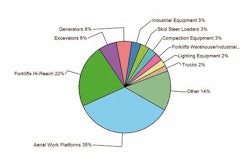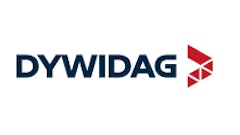New business volume grew 16.5 percent in the equipment finance industry in 2011, according to the 2012 Survey of Equipment Finance Activity(SEFA) released by the Equipment Leasing and Finance Association. The growth in volume surpassed the 3.9 percent increase reported for 2010, marking the second year of growth following a 30.3 percent decline in 2009 and a 2.2 percent decline in 2008. The SEFA, which is based on responses from 109 ELFA member companies, covers key statistical, financial and operations information for the $628 billion equipment finance industry.
"The 2012 SEFA data show the equipment finance sector continued to gain momentum as the economy improved in 2011," said William G. Sutton, ELFA President and CEO. "More recent data collected in 2012 indicate that steady growth is continuing, even amid a slow economic recovery."
Key findings for 2011 as reported in the 2012 SEFA include:
- Overall new business volume grew 16.5%, a significant increase over 2010 growth of 3.9%.
- By market segment: All market segments showed growth in volume, except for the smallest segment. New business volume fell 4.8% for the micro-ticket segment but grew 15.2% for the small-ticket segment, 21.8% for the middle-ticket segment and 10.2% for the large-ticket segment.
- By organization type: Independent equipment finance organizations saw the strongest increase in new business volume (19.7%, up from 5.2% in 2010), with banks close behind at 19.3% (up from a 0.9% decrease in 2010). Captives saw their volume grow by 10.5% (down from 11.3% in 2010).
- From an asset perspective, the equipment types that saw increases in new business volume included agriculture; computer equipment; construction; furniture, fixtures and equipment; industrial/manufacturing; materials handling; printing and transportation. The equipment types that saw new business volume decline included medical; mining, oil and gas extraction; office machines; telecommunications and amusements.
- Delinquencies and full-year losses (charge-offs) continued to decline. Delinquencies in the overall portfolio were just 1.4% past due 31 days or more in 2011, the lowest in at least five years. Delinquencies remained an issue for certain industries, especially construction and printing. Charge-offs fell from 1% in 2010 to 0.4% in 2011.
- Employment levels remained stable, although as portfolios improved, positions in collections declined and positions in bookings increased.
- Given the current financial markets, cost of funds declined significantly. Competitive pressure did drive pre-tax spreads lower in 2011, but still they remained higher than they were in 2008 and 2007.
- Credit approvals increased, as did the percentage of those approved applications being booked and funded. Over 70% of overall credit applications were approved and just under 50% of submitted applications were booked.
- Net income increased overall in both dollar terms and as a percentage of total revenues. Return on average equity remained healthy at 15.5%. Return on average assets increased to 2.0%, returning to levels seen earlier in the decade.
(ELFA Fact Sheet: Equipment Finance in the Construction Industry...)



















